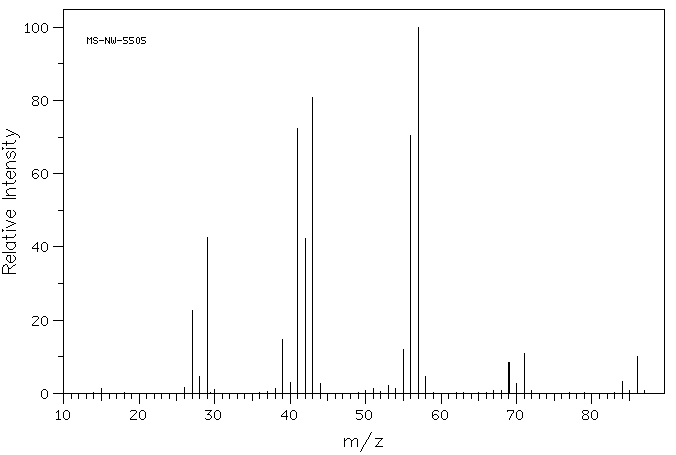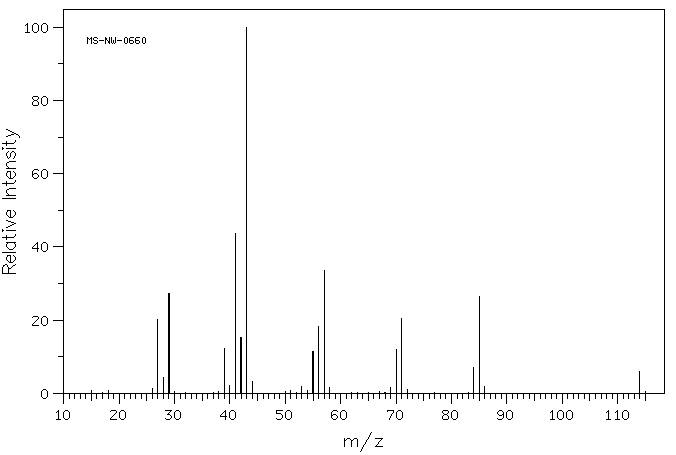Structure & Reactivity
Introductory Mass Spectrometry
MS1. Introduction
Through mass spectrometry we can learn the molecular mass of a compound (more commonly called the molecular weight). Knowing the molecular weight helps us to determine a structure by limiting the possibilities for the molecular formula.
Individual molecules often fall apart during the mass spectrometry experiment. As a result, in addition to measuring the mass of an entire molecule, we also obtain the weights of various smaller pieces of the molecule. That may add some confusion to the data. However, these fragments provide an idea about what parts make up the whole molecule.
A mass spectrum of hexane (molecular weight 86) illustrates what the data looks like.
![]()

Figure MS1. Mass spectrum of hexane.
Source: SDBSWeb : http://riodb01.ibase.aist.go.jp/sdbs/ (National Institute of Advanced Industrial Science and Technology of Japan, 22 August 2008)
Problem MS1.1.
The following figure shows the mass spectrum of a saturated hydrocarbon (containing only carbon and hydrogen with only single bonds between carbons, not double bonds).

a) Draw five different structures that would have the molecular weight of this compound.
b) Choose four smaller m/z values from the spectrum and draw one structure for each of them. Note that these fragments will not have complete Lewis structures.
This site was written by Chris P. Schaller, Ph.D., College of Saint Benedict / Saint John's University (retired) with other authors as noted on individual pages. It is freely available for educational use.

Structure & Reactivity in Organic, Biological and Inorganic Chemistry by Chris Schaller is licensed under a Creative Commons Attribution-NonCommercial 3.0 Unported License.
Send corrections to cschaller@csbsju.edu
This material is based upon work supported by the National Science Foundation under Grant No. 1043566. Any opinions, findings, and conclusions or recommendations expressed in this material are those of the author(s) and do not necessarily reflect the views of the National Science Foundation.Navigation: